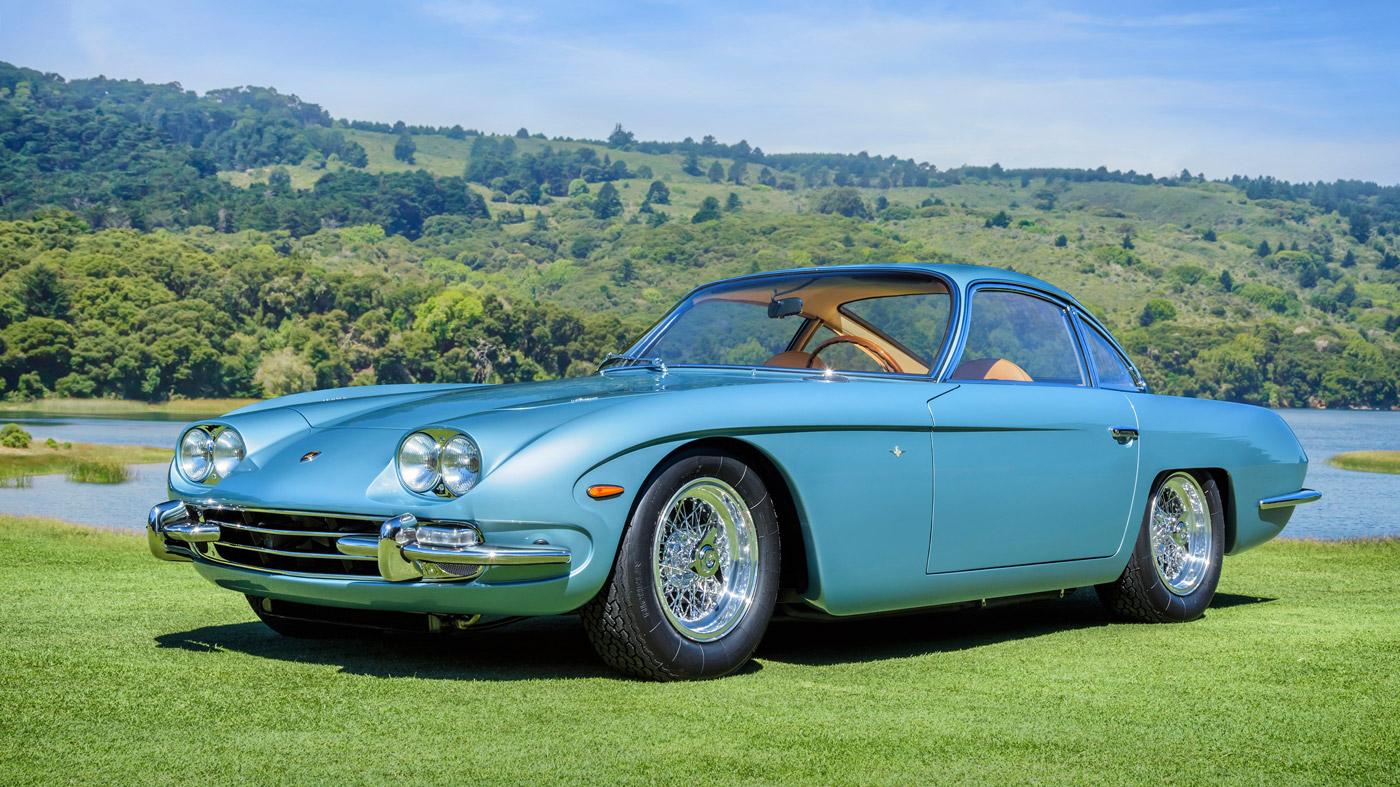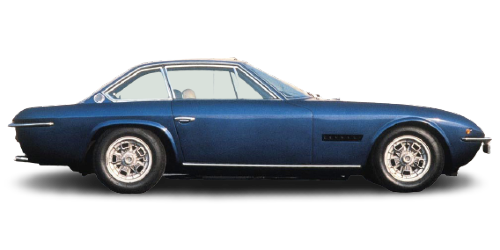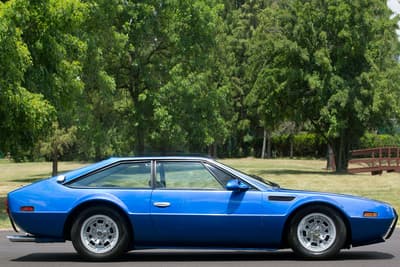In early 1966 the Lamborghini 350 GT could be ordered with a new 4-liter L400 engine as an option, resulting in the 400 GT model, sometimes also designated as the ‘interim’ version or the ‘400 GT 2 Posti’, note that this is a different model from the later 400 GT 2+2 that showed a modified body design, especially at the rear to accommodate the two extra seats.
The original 3464cc unit from the 350 GT was enlarged to 3939cc by increasing the bore and stroke from 77x62mm to 82x62mm while the compression ratio went from 9.5:1 to 10.2:2 the result was a power increase from 280 hp to 320 hp at 6,500 rpm. This new 4-liter engine would become the basis for several models over the next years at Automobili Lamborghini SpA, a lot of the image and attraction of future Lamborghini would partly be due to this L400 engine, in fact right up to the Murciélago the basis from this V12 would be used.
After testing a Bull with this new engine, which could be recognized by having the oil stick on the passenger side and back cam cover (the 350 GT engine had silver cam covers), in the October 1966 issue of Road & Track, they termed the 400 GT ‘the finest GT car they’ve ever driven’, a very impressive feat for a company that has only been in the car industry for two years.
Most sources state only 23 units were built as this two-seater 400 GT, 20 of these were mounted with a heavy, steel body, but 3 were built using the patented Superleggera bodywork as seen on the original 350 GT model, acquiring one of these 3 lightweight models would be very expensive.
Rumor has it a very limited number of cars were delivered as a 350 GT but later returned to the factory to have the more powerful 4-liter engine installed, #0412 is one of those cars, these would not be real Interim cars but I guess it could be difficult to determine this today as the factory left 350GT plates on some real Interim ones while 400GT badges and plates will appear on models that were clearly not actual 400 GT Interim models initially.
The transition from 350 GT to 400 GT was done gradually from around the #400 chassis number, some sources even state every one of the #400 serial numbers could be an Interim one, but that hasn’t been confirmed. It could be stated the cars with the Salisbury differential were in fact early 400 GT ones while the Lamborghini differential was used on the official 400 GT Interim cars.
The 4.0-Liter unit was a very smooth-running engine, it was willing to run at any rpm and always started instantly. Yet it reached the highest top speed Road & Track ever recorded. The 350/400 GT had a very elegant styling, with its aluminum body and two-seat layout, some prefer it over the Miura or the Countach.
These highly energetic models, with their names taken from bullfighting, have made the Lamborghini name world-famous, but they don’t even come close to Ferruccio’s opinion of a Gran Turismo. It is considered that the 350/400 GT-series were the closest to Ferruccio’s original ideas of creating a comfortable high-performer, the Countach can hardly be called comfortable or practical.
On the inside nothing much changed, the steering wheel and gear shift knob were finished in wood, while the rest of the interior used leather, the central console housed four dials and a large collection of lights and rocker switches.
Few people wouldn’t mind owning one of these early Lamborghini, especially one of the three aluminum bodied 400 GT, but just about any of these first series GT is a great driving car, very powerful for their age, back in 2011 chassis number #0526 was sold at $341,000 while #0574 was offered for sale in 2012 at €495,000 this was in fact the last 2-seater body made by Touring, but it looked odd with the dual headlights from the 2+2 model and Miura style wheels instead of the Borrani usually fitted to these early Bulls.




